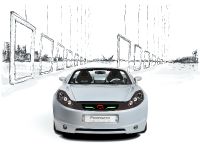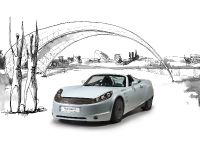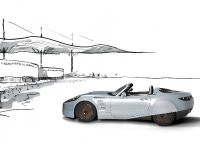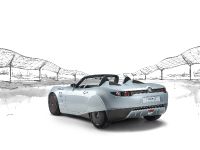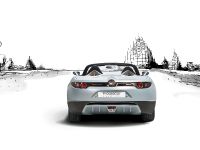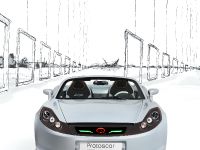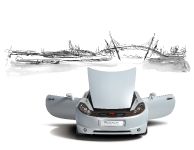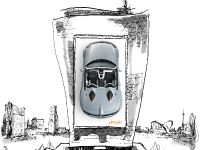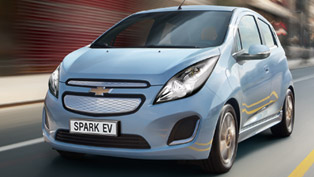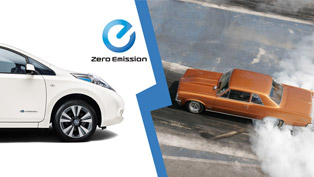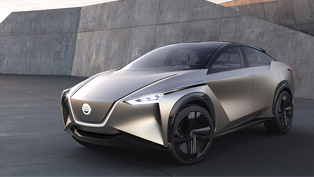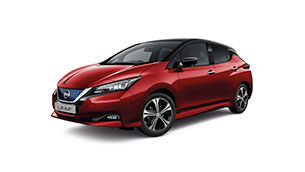Protoscar SA unveiled LAMPO at the Geneva Motor Show
Protoscar SA unveiled LAMPO - a full size sport cabriolet - at the Geneva Motor Show 2009 . LAMPO is powered by two BRUSA electric motors (one rear and one front), optimized for maximizing acceleration and regenerative braking respectively. They deliver a total output of 268 HP and a torque of over 440 Nm. The lightweight Lithium-Ion battery pack with a capacity of 32 kWh allows for a range of over 200 km. LAMPO shows that also a zero-emission electric vehicle can offer the same performance as a traditional sporty car.
The primary energy source used for charging the LAMPO has been in existence for more than 4.5 billion years and has demonstrated to be rather reliable: it's the sun. The exploitation of solar energy for LAMPO is possible thanks to a 16 kWp photovoltaic plant located in Seggiano, Tuscany.
Never before a premium driving pleasure like the one of the LAMPO has been achieved at such an optimal level of overall "Well-to-Wheel" energy efficiency - and zero emissions. However, even if the LAMPO was "filled up" with today's particularly clean Swiss electricity mix, the WtW CO2 emissions of this vehicle would only account for about 7 g/km! Considering the EU electricity mix projection scenario for 2020, elaborated by Eurelectric, the WtW CO2 emission would still be limited to about 40 g/km.
Through the showcar LAMPO, Protoscar and its partners aim to demonstrate new technologies which include absolute innovations such as "intelligent charging" or interactive GPS-based "range estimator" – and discuss potential applications together with car manufacturers, in order to implement these solutions into their plans for future CleanCars.
In depth Protoscar Protoscar SA is a design company founded in 1987 specialized in CleanCars and based in Rovio (Ticino, Switzerland). It presently employs 14 specialists. We act like a "Minergie-architect", but apply the efficiency-concepts to cars, mainly by introducing electrification.
Our unique experience and holistic approach allow us not only to develop forward looking strategies and outstanding vehicle concepts, but also to support the market introduction of CleanCars and the communication activity of these technologies.
We are proud to include worldwide companies like Daimler AG, GeneralMotors, Rinspeed- Esoro and Nissan among our faithful clients.
Vehicle‘s name and logo LAMPO, in the Italian language means "lightning". A lightning stands for power, especially for electric energy like the one propelling LAMPO. Moreover a lightning is fast, intense, impressive and, last but not least, LAMPO is a product of nature.
The edgy logo of LAMPO with its straight lines reminds the lightening and emphasizes the electric spirit of the car.
eQmotion and clean energy eQmotion is a "philosophy", made reality by a consortium of companies supporting and implementing EV-projects. Actually this pool is developing exciting innovative full electric vehicles.
The name eQmotion is an acronym composed by:
• electric • Quotient (of electrification) / Quality • motion
Our showcars shall have an eQ of 100: we want to drive 100% electrically, trying to overcome the "compromises" in terms of Well to Wheel emissions and efficiency.
Also, driving cars - and particularly electric vehicles - has a lot to do with e(Q)motions. We pursue a high vehicle and component Quality relying on most recent technical standards and innovations, in order to maximize emotional driving pleasure.
The label eQmotion has been created by BRUSA Elektronik AG and Protoscar SA and will be used on different EV-projects. The first two showcars realized under this label are Spyder and LAMPO.
The eQmotion philosophy integrates of course energetic considerations. We are not just realizing zero emission vehicles, but we care about the energy needed to let them move. In other words we look at the entire energy chain that a vehicle requires: this is the so called "Well-to-Wheel". On the entire energy chain the attention is focused on the reduction of CO2 emissions. The energy used by these vehicles comes from 100% renewable energy sources (solar energy in LAMPO's case).
The exploitation of solar power has been possible thanks to a remote 16 kWh photovoltaic plant located in Seggiano (Tuscany) in the facility of the farmhouse of Vitabella Palazzetto. The energy produced by this system is put into the global grid and charged into LAMPO's batteries not perforce where the photovoltaic plant is located. The goal is to self-produce all the energy that we need for the car getting to counterbalance the entire consumption. Never before a premium driving pleasure like the one of the LAMPO has been possible at such a level of overall "Well-to-Wheel" energy efficiency.
Innovative top-down approach With LAMPO we clearly apply a top-down approach, instead of a bottom-up strategy. In fact, the automobile sector is normally based on this approach which consists in initially showing trendy characteristics in exclusive, premium, vehicles. Unavoidably, at first the price of such products is very high but with growing production the prices decrease, allowing a large number of people to have access to the new technology (in other words the first buyers allow the technology to circulate). In the electric vehicles market the approach - still very often - is viceversa based on a bottom-up approach. This is the reason why electric vehicles are not always very successful. In today's market the majority of the EV promoters try to sell electric cars as a "rational vehicle" and forget the emotional aspects. But as a matter of fact, for most buyers a car is essentially an emotional object and not only a means of transport. The LAMPO shall demonstrate that electric drivetrains can be perceived positively and totally accepted if placed and launched in a different way.
Unique features The research and practical presentation of new, more efficient energy features is carried out in cooperation with various partners and relates to several areas:
Intelligent charging system Some charging parameters like the earliest charging time/last charging stop, max. charging yield and charging status to be achieved by the end of charging, will regulate the onboard chargers.
The user of the vehicle is able to choose and set - directly in the vehicle - some charging parameters which will control the onboard battery charger, e.g.
- Earliest charging time/ latest charging stop - Maximum charging yield - Charging status to be achieved by end of the charging
Accelerated charge (for public and private charging points) With today's European energy supply standard (typically 240V and 10 to 16Amps) the charging time for an EV vehicle like the LAMPO is around 12 hours (considering a 16Amps plug): the typical available overnight time. In fact, with a small extra-investment, this time could be half: with very small adaptations (basically 2,5 mm2 cable instead of 1,5 mm2 connections, and a little on/off electronic switch avoiding current-flow during the plug-in action) a 16Amps plug easily can be upgraded to deliver 32Amps, meaning a power of 7 kW. The resulting charging time will then still not be as fast as for liquid fuels, but interesting enough for significantly recharging the batteries over lunch or shopping time, and allowing a shifting of the charging time – during nights - into periods where energy is available over-abundantly. Such energy supply optimizations are studied and developed in association with Alpiq, the Swiss energy leader.
Public charging & payment system Several highly sophisticated public charging stations, including power metering and billing per chip cards or other techniques, have been proposed recently, yet their relatively high investment cost - causing also high cost per kWh delivered - does not facilitate their widespread application.
In order to avoid high cost of metering and billing the "Park & Charge" concept has been created. It is a very simple system, and it is based on a lump-sum payment, combining low investment cost with low operation cost – exactly like it happens with the well known yearly "sticker" allowing to pay for the use of Swiss highways. This service is offered by the Swiss Electric Vehicle Association (ECS) and has been in operation for over 10 years, counting 600 charging points all over Switzerland. At the moment, in EU, there are 1346 public charging points: over 100 of them are "Park and Charge". A detailed list of public charging points in Switzerland and Europe is available at: www.lemnet.org.
EVA Range estimator For a battery-driven vehicle the accuracy of the possible autonomy is absolutely important, and with a simple 0 -100% indicator, it is impossible to determine. This depends on several highly variable factors, e.g. topography (upward/downward slopes) or environmental temperature. These variances should be included in the residual autonomy indication – but they are not considered in today's EVs. Thanks to an interactive advanced navigation system, a LAMPO driver is provided with the following information:- "radar graph" of the residual range integrated with standard navigation capabilities- charging station location - advanced long-distance trip planning which incorporates charging time and recommended locations.
The EVA system is being developed in cooperation with Virve, W&B.
All wheel drive for max. regenerative braking & safety When accelerating, the load is shifted to the rear axle while in braking it moves to the front axle. More load is on an axle, more successfully the traction can be transferred to the wheels. If the two electric motors can have differential tasks (primarily to pull or primarily to regenerate) the total efficiency of the vehicle can be considerably increased. This is exactly what we will demonstrate and – thanks to axles which can be singularly disconnected – also tested for comparison.
This optimized traction system has been conceived, developed and implemented together with the company BRUSA.
